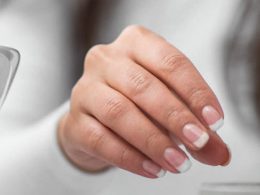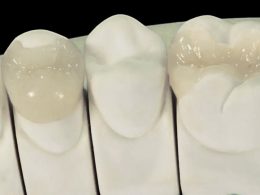Table of Contents
A toothache, described as any pain, soreness, or ache in or around a tooth; can be a frustrating and unpleasant experience. In addition to a sharp or dull pain, your tooth may be sensitive to temperature or painful when chewing or biting. In order to get to the bottom of your tooth pain, your Doctor will consider several potential diagnoses based on your medical history, dental exam, and sometimes an imaging test, usually an X-ray.
Here is a summary of the most common causes of a toothache, ranging from tooth sensitivity and decay to serious infections, like abscess formation. Then, in the second part of the post, we will make a very general description of the professional treatment options for the different pathological entities capable of causing pain at the oral and maxillofacial areas.
1- Causes of Dental Pain
Among all the things that might cause a toothache, the most common are tooth decay, inflammation of the tooth pulp, an abscess, a cracked or impacted tooth, gum disease, and sensitive teeth. Also, there are a couple of potential, though rare medical emergencies that may cause tooth pain or result from untreated tooth conditions; Ludwig’s angina and cavernous sinus thrombosis.
Let us look at each of these potential causes individually:
Gum Disease
Gum disease is characterized by infection of the gums. More specifically, with gingivitis, the gums become inflamed and become hot, red, and swollen. When an infection occurs in the support bone, periodontitis occurs.
Eventually, if left untreated, the infection causes bone loss and deterioration of the gums. Gums become detached from the teeth, forming pockets that fill with more bacteria. Tooth roots are then exposed to plaque and become susceptible to decay and sensitive to cold, touch, and chewing.
Tooth Decay
Tooth decay refers to erosion and cavity formation in the hard tissues (enamel and dentin) of the tooth. When plaque, a sticky layer of bacteria, forms on the tooth enamel, it feeds on the sugars and starches from food particles in your mouth. This produces an acid that eats away at the hard tissues, causing weak areas, holes and severe pain. Over time, the tooth breaks down and a cavity forms.
Sometimes you may experience discomfort when your teeth, or a specific tooth with cavities, is exposed to cold air, liquids, and certain foods. This means that your dental organs are sensitive, are being attacked by bacteria, and need immediate treatment.
Exposed Dentin
Sometimes you may experience discomfort when your teeth or a specific tooth are exposed to cold air, liquids, and certain foods. This means your teeth may have developed a sensitivity linked to one or more stimuli, like cold temperatures.
Teeth sensitivity develops from exposed and permeable dentin, the tissue that lies underneath both the enamel (the hard outer layer of your tooth) and the cementum (the tissue that covers the tooth root).
Dentin may become exposed as a result of cavities, worn fillings, or from cracked teeth. Receding gums in gum disease (or due to forceful brushing) can also expose dentin, leading to teeth sensitivity.
Bruxism
Bruxism, characterized by clenching and teeth grinding, often while sleeping, may occur without you knowing it. But, particularly over time, it may cause tooth sensitivity, as well as tooth or facial pain.
Inflammation of the Tooth Pulp (Pulpitis)
When tooth decay extends deep into the pulp of the tooth, pulpitis occurs. This means that the tissue in the center of the tooth (nerve/tooth pulp), which is rich in blood vessels and nerves, becomes inflamed and irritated. This inflammation causes pressure to build inside the tooth and subsequently within the surrounding tissues.
Besides tooth decay, other conditions that may cause pulpitis include trauma to a tooth and multiple invasive procedures or fillings. The main symptom of pulpitis is an exquisite sensitivity to various stimuli, largely temperature (hot or cold).
It is important to mention there are two types of pulpitis; reversible pulpitis and irreversible pulpitis. If the pulpitis is reversible, the pain or sensitivity stops within a couple seconds of the stimuli being removed. If the pulpitis is irreversible, the pain can linger for minutes after the stimulus is taken away.
Dental Fracture
A cracked or fractured tooth may occur from trauma to the mouth, such as when an athlete receives a blow to the face. In addition, the force from biting down on a hard object like ice or a popcorn kernel can sometimes cause a tooth to crack. Severe bruxism may also damage and crack teeth.
Symptoms of a cracked tooth may include a sharp pain when biting or chewing. Your cracked tooth may also be sensitive to hot and cold temperatures or to sweet and sour foods.
Keep in mind, there are different types of cracks in teeth, and identifying the type of crack you have will ultimately guide your treatment plan. The American Association of Endodontists (AAE) has identified five types of cracks or fractures in teeth:
- Craze Line When shallow, tiny crack develop on the outer enamel.
- Cusp Fracture When a piece of the tooth’s chewing surface breaks off, usually around a filling.
- Crown Fracture When a crack extends from the chewing surface of your tooth vertically toward the root of the tooth. The crack may or may not extend below the gum line.
- Split Fracture When the tooth splits into two parts.
- Vertical Root Fracture When a crack forms in the root of the tooth. Since fracture roots are usually not visible, it may go unnoticed until an infection develops.
Dental Abscess
A dental abscess, which usually results from an untreated cavity or pulpitis, is caused by the buildup of bacteria inside the pulp chamber. The infected pulp chamber then tries to drain itself out of the very tip of the tooth root.
The pressure from the draining infection causes a constant pain that is worse when chewing or when percussed (tapped on). If left untreated, the pain can become severe with swelling.
Impacted Tooth
Teeth can become impacted when they are prevented from moving into their proper position in the mouth by other teeth, gums, or bone.
The most common teeth to become impacted are wisdom teeth because they are usually the last to erupt. When the jawbone cannot accommodate these extra teeth, the teeth remain stuck under the gum. This impaction can create pressure, pain, and even jaw soreness.
Ludwig’s Angina
Very rarely, a submandibular space infection, also called Ludwig’s angina can cause tooth and mouth pain. This very serious, life-threatening infection of the submandibular space, an area deep within the floor of your mouth, usually occurs as a result of an infected second or third mandibular molar tooth.
A submandibular space infection is very serious and quickly spreads, causing fever, chills, mouth pain, stiff neck, drooling, a muffled voice, and difficulty swallowing. If the infection spreads to a person’s airway, breathing can become difficult.
Cavernous Sinus Thrombosis
Very rarely, a condition called cavernous sinus thrombosis, where a clot forms in the cavernous sinus, located at the base of the skull; may develop from an untreated facial, sinus, ear, or dental infection. In addition to a high fever, other symptoms of cavernous sinus thrombosis include a severe headache, often located behind the eyes, as well as eyelid edema and weakness of the eye muscles.
2- Treatment of Dental Pain
Once your Dentist has diagnosed the cause of your toothache, he will explain to you what is involved in fixing the problem.
Medication
Depending on your underlying diagnosis, your Dentist may recommend or prescribe various medications:
- Analgesics and Anti-Inflammatory Drugs For pain relief, your Dentist may recommend taking Ibuprofen or a nonsteroidal anti-inflammatory (NSAID). For severe pain, your Doctor may prescribe an opioid. Local nerve block injections may also be given for severe pain or during a dental procedure.
- Antibiotics If you have an abscess, pulpitis, gingivitis, or periodontitis your Doctor may prescribe an antibiotic, like amoxicillin. Antibiotics will also be prescribed for bacterial sinusitis.
Oral Rinses and Topical Fluoride
Chlorhexidine oral rinses may be administered by your Dentist to treat gingivitis. Fluoride rinses or topical fluoride treatments may also be given by your Dentist to prevent or treat tooth decay.
For tooth sensitivity, in addition to brushing your teeth with a special toothpaste made for teeth sensitivity, such as Sensodyne, your Dentist may apply fluoride to your teeth; especially the parts of your teeth that meet the gum.
Occlusal Splints
If you have sleep-related bruxism, your Dentist may recommend wearing a mouthguard at nighttime.
Keep in mind, while a mouthguard will protect your teeth from damage, it will not decrease the number of bruxism episodes. This is why addressing your underlying bruxism triggers, stress or drinking alcohol or caffeine at night, will also be an essential part of your treatment plan.
Dental Procedures
Sometimes, various dental procedures are warranted to treat your diagnosis. For instance, for tooth decay and cavity formation, the primary treatment is restorative therapy, which entails removal of the decay by drilling, followed by filling of the removed area with a strong material (called a filling).
For irreversible pulpitis, your Dentist will need to perform a root canal. For an abscess, incision and drainage of the infected pocket is the primary therapy.
“Most Causes of Dental Pain, Require Professional Attention”.
DENTAL TIP
Lastly, for a cracked tooth, treatment depends on the location and direction of the crack, as well as the extent of the damage. For instance, for a fractured cusp, your Dentist may simply place a new filling or overlay over the cracked tooth to protect it.
Likewise, for a cracked tooth that does not extend below the gum line, your Dentist may perform a root canal and place a crown to prevent the crack from spreading further. For more serious cracks, like a crack that extends below the gum line or for a fractured root with an associated infection, tooth extraction may be necessary.
Due to the fact that most causes of tooth pain require the expert care of a Dentist, be sure to contact your Dentist’s office with any new tooth pain. This holds true even for tooth pain that is mild or intermittent. If left untreated, you may develop a serious complication and/or require a more invasive dental procedure.
Save Up to 70% on Your Dental Quote!
Never forget that dental tourism is an extraordinary tool for accessing top-notch Dentistry.
DENTAL VIP trusts that quality of dental care should be affordable to all, no matter where you live. Hundreds of patients come to Venezuela for state-of-the-art medical and dental care every year, saving large amounts of money on health. Our rates are significantly lower than in any other Latin American country, without it implying a decrease or compromise in the quality of service. Simply what happens is that property costs and salary levels are both much lower than in any other place, which translates in better offers for our patients.
We guarantee that by using the services offered by DENTAL VIP, you could save up to 70% on your dental quote, compared to the local rates stipulated in your country.
Come for the price and stay for the quality! Contact us today and overcome once and for all any barrier that prevents you from show off a white, healthy and beautiful smile.











